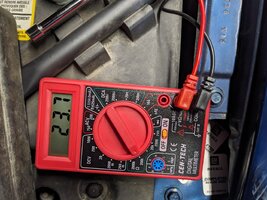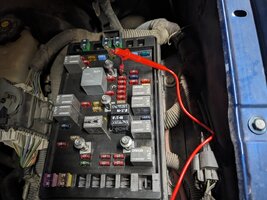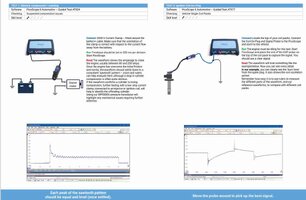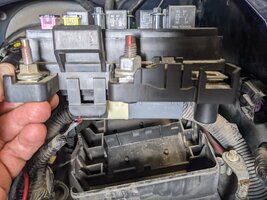Previously had trouble with this but thought it was remedied in October of 2021 with replacement of the PCM from PCM of N. Carolina. Mileage at the time was 190K. Now it has 200K miles. In the past 10k miles and almost three years it's been running perfectly. Better than ever before. Until today. Uggghhhh....
The dreaded fuse 28 blew and left me stranded on the side of the road. Luckily only 35 miles from home and I have AAA Premier so was able to get it towed home on a flatbed truck.
Similar to other times, I put a new fuse in while I was waiting for the tow truck to arrive and it instantly blew it again.
Loaded it up on the tow truck. Driver left it off in my driveway. Take a few minutes to look everything over, confirm the blown fuse. Replace it with a new one. Turn the key. Starts right up. A little bit of a rough idle until the PCM relearns and resets and it's all good again.
The fact that it's a blown fuse again, even with the new PCM, I'm now leaning towards a direct intermittant short on that circuit.
Fuse 28 powers the PCM, the fuel injectors, the coil packs, and the fuel pump. Am I missing anything?
Looks like I'll be pulling apart some wiring harnesses looking for a partially broken wire. Pink will be the one I'm following. There are no signs of rodents chewing on anything and it is always garaged with no evidence of rodents in my garage.
Any other suggestions would be appreciated.
The dreaded fuse 28 blew and left me stranded on the side of the road. Luckily only 35 miles from home and I have AAA Premier so was able to get it towed home on a flatbed truck.
Similar to other times, I put a new fuse in while I was waiting for the tow truck to arrive and it instantly blew it again.
Loaded it up on the tow truck. Driver left it off in my driveway. Take a few minutes to look everything over, confirm the blown fuse. Replace it with a new one. Turn the key. Starts right up. A little bit of a rough idle until the PCM relearns and resets and it's all good again.
The fact that it's a blown fuse again, even with the new PCM, I'm now leaning towards a direct intermittant short on that circuit.
Fuse 28 powers the PCM, the fuel injectors, the coil packs, and the fuel pump. Am I missing anything?
Looks like I'll be pulling apart some wiring harnesses looking for a partially broken wire. Pink will be the one I'm following. There are no signs of rodents chewing on anything and it is always garaged with no evidence of rodents in my garage.
Any other suggestions would be appreciated.





